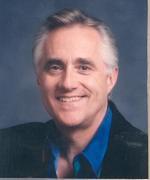1972 1973 Asst. Prof., Eng. Physics, McMaster University 1973 1975 Asst. Prof., Biomed. Eng., Duke University 1975 1979 Assoc. Prof., Biomed. Eng., Duke University 1979 1981 Prof., Biomed. Eng., Duke University 1981 *** Prof., Pathology and Physics, Univ. British Col. 1997 *** Prof. Biomed. Eng. and Physics, Boston Univ. 2001 - *** Director: Whitaker Labs in Cell and Subcellular Bioeng., Boston Univ.
1971 – 1972 US-NSF/NATO postdoctoral Fellow 1975 – 1980 USPHS-NIH Research Career Development Award 1987 , 1991 Senior Scientist Award, Alexander von Humboldt Foundation, Germany 1991 – 2000 Assoc. Fellow and Assoc. Director, SSSI Program Canadian Institute for Advanced Research 2000 – *** Fellow, American Institute for Medical and Biological Engineering 2000 – *** Foreign Member, The Royal Danish Academy of Sciences and Letters
Research in my laboratory is focussed on exposing the physics that underlies the unusual structural properties and complex molecular machinery in biological cells. Combining ultrasensitive mechanical tools and advanced video optical microscopy, we have developed a technique to softly touch and probe organic structures over a scale from single molecules to the size of visible cells. Assembling the technique into a computer controlled instrument, we have established a new method of dynamic force spectroscopy that provides an inner view of the energy landscapes which govern strengths of molecular bonds and characterize pathways followed in structural transitions (like force-driven unfolding of proteins). For the first time, measurements of forces to break single bonds or drive structural transitions with ultrasensitive probes can be related to nanoscale chemical interactions, which is opening up a whole new realm of molecular biophysics. Guided by theory, experiments are designed to gain a physical understanding of biomolecular bonds and nonspecific interactions, biological cell structure, mechano-chemical transduction and motion, which can be related to molecular biology and chemistry. The goals are not only to establish a fundamental understanding of living processes at the molecular level but also to derive insights for condensed matter physics and advanced technology through study of nature’s engineering. Evans E., and W. Rawicz. 1997. Elasticity of fuzzy biomembranes. Phys. Rev. Lett. 79:2379-2382. Merkle R., Nassoy, P., Leung, A., Ritchie, K. and E. Evans. 1999. Energy landscapes of receptor-ligand bonds explored with dynamic force spectroscopy. Nature 397: 50-53. Rawicz, W., Olbrich, K., McIntosh, T., Needham, D. and E. Evans. 2000. Affect of chain length and unsaturation on elasticity of lipid bilayers. Biophys. J. 79:328-339. Evans, E. 2001. Probing the relation between force – lifetime – and chemistry in single molecular bonds. Ann. Rev. Biophys. Biomol. Structure 30:105-128. Evans, E. and P. Williams. 2002. Dynamic force spectroscopy: I. single bonds. In Physics of Bio-Molecules and Cells, Ecoles des HOUCHES d’Ete LXXV. EDP Sciences – Springer-Verlag, pp. 145 – 185. Evans, E. and V. Heinrich. 2003. Dynamic strength of fluid membranes. Comptes Rendus de L’Academie des Sciences – Physique. Vol 4/2, pp 265 – 274.
